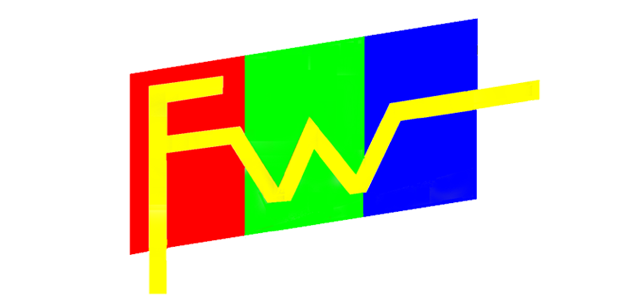What is the difference between resistive and capacitive touch?
Capacitive touch and resistive touch are widely used in electronic products such as smartphones and tablet computers that we use in our daily lives. Before 2010, resistive touch screens were the most used sensing screens. At that time, this touch technology was widely used. Now resistive touch screens Touch screens are also still used in the industrial field. Capacitive screen technology was applied later than resistive screen. So how are they different internally?
The differences are: different meanings, different working principles, different accuracy, different sensitivity, different damage resistance, different multi-touch feasibility, different cleaning method, different environmental adaptability, different visual effects in sunlight, and different response speeds.
Different meaning
Resistive touch is different from capacitive touch in structure. It is a combination of glass + film + ITO. It works through pressure sensing and can be touched with any object.
The capacitive touch is a four-layer composite glass, which uses the current sensing of the human body to work.
The outermost layer of the capacitive touch is a protective layer of silica glass, which may shatter under severe impact; while the outermost layer of the resistive touch is a thin film, which is prone to scratches, but is less prone to breakage than capacitive touch. Capacitive touch can theoretically reach several pixels, while resistive touch is accurate to at least a single display pixel.
Working principle different
The working principle of the resistive touch is mainly to realize the operation and control of the screen content through the principle of pressure sensing. The screen body part of this touch screen is a multi-layer composite film that is very compatible with the display surface. The first layer is glass or plexiglass. The bottom layer, the second layer is the partition layer, the third layer is the multi-component resin surface layer, and the surface is also coated with a transparent conductive layer, which is covered with a hardened, smooth and scratch-resistant plastic layer on the outer surface. The conductive layer and glass layer sensor on the surface of the polyester surface layer are separated by many tiny spacers. The current passes through the surface layer. When the surface layer is touched lightly, it touches the bottom layer, and the controller reads the corresponding current and calculate the distance of the finger position. This touch screen uses two highly transparent conductive layers to form a touch screen, and the distance between the two layers is only 2.5 microns. When the finger touches the screen, the two conductive layers that are usually insulated from each other have a contact at the touch point. Because one of the conductive layers is connected to the 5V uniform voltage field in the Y-axis direction, the voltage of the detection layer changes from zero to If it is not zero, after the controller detects this connection, it performs A/D conversion, and compares the obtained voltage value with 5V to obtain the Y-axis coordinate of the touch point, and similarly obtains the X-axis coordinate. It is the most basic principle common to all resistive technology touch screens.

Capacitive touch: Capacitive touch panel (CTP) works by using the current sensing of the human body. The capacitive screen is a four-layer composite glass screen. The inner surface of the glass screen and the interlayer are each coated with a layer of ITO (nano-indium tin metal oxide). The outermost layer is a silica glass protective layer with a thickness of only 0.0015mm, and the interlayer ITO coating as a working surface, four electrodes are drawn from the four corners, and the inner layer of ITO is the screen layer to ensure the working environment.

When the user touches the capacitive touch, due to the electric field of the human body, a coupling capacitor is formed between the user’s finger and the work surface. Because the work surface is connected to a high-frequency signal, the finger absorbs a small current, which flows from the four corners of the screen respectively. In theory, the current flowing through the four electrodes is proportional to the distance from the finger to the four corners. The controller obtains the position through precise calculation of the ratio of the four currents. It can reach 99% accuracy and has a response speed of less than 3ms.
Different precision
Resistive touch: The accuracy is at least a single display pixel, which can be seen when using a stylus. Facilitates handwriting recognition and facilitates operations in interfaces that use small control elements.
Capacitive touch: The theoretical accuracy can reach a few pixels, but it is actually limited by the contact area of the finger. So that it is difficult for the user to precisely click on the target smaller than 1cm2.
Different sensitivity
Resistive touch: It requires pressure to make the layers of the screen come into contact, and can be operated with fingers (even with gloves), fingernails, stylus, etc.
Capacitive screen: The slightest touch from the surface of a charged finger activates the capacitive sensing system below the screen. Inanimate objects, fingernails, gloves are invalid.
Different damage resistance
Resistive touch: The fundamental characteristics of a resistive touch determine that its top is soft and needs to be able to be pressed down. This makes the screen very prone to scratches. Resistive touch requires protective film and relatively more frequent calibration. On the plus side, resistive touch screen devices that use plastic layers are generally less prone to damage and are less prone to breakage.
Capacitive touch: glass can be used for the outer layer. While not indestructible and likely to shatter under severe impact, the glass is better for everyday scratches and smudges.
Different possibilities for multi-touch
Resistive screen: Resistive screen only supports single-point touch, that is, it can only recognize and support the touch and click of one finger at a time. If more than two points are touched at the same time, it cannot respond correctly.
Capacitive touch: The multi-touch technology supported by the capacitive touch can be greatly convenient to operate in actual use, and the sensitive sensitivity and damage resistance are more suitable for entertainment and games. For example, zooming in and out when browsing pictures, and zooming in and out of pages when browsing web pages, the user can also touch the screen with a single touch with both hands, or touch the screen with different gestures such as single-click, double-click, pan, press, scroll, and rotate to achieve arbitrary control, so as to better and more comprehensive understanding of the relevant characteristics of the object.
Cleaning is different
Resistive touch: Since it can be operated with a stylus or fingernail, it is less likely to leave fingerprints, oil stains and bacteria on the screen.
Capacitive touch: Touch with your whole finger, but the glass outer layer is easier to clean.
Different environmental adaptability
Resistive touch: There is evidence that the Nokia5800 with a resistive screen can work well in temperatures from -15°C to +45°C, with little requirement for humidity.
Capacitive touch: Typical operating temperatures are between 0° and 35° and require at least 5% humidity.
Different visual effects in sunlight
Resistive touch: Usually bad, the extra screen layer reflects a lot of sunlight.
Capacitive touch: still very good.
Different response speed
Resistive touch: The response speed of resistive screen is a little slow.
Capacitive touch: Capacitive screen responds very quickly.
Different cost
Resistive touch: very cheap
Capacitive touch: The price of capacitive screen from different manufacturers is 10% to 50% more expensive than that of resistive screen. With the intervention of more manufacturers, the technology of touch screen is mature, the manufacturing process is optimized, and the scale of the industry is expanded, and the cost of capacitive touch screen will gradually decrease. will continue to improve.
Disadvantages of capacitive and resistive touch
1) Disadvantages of capacitive touch:
The main disadvantage of the capacitive touch is drift: when the ambient temperature and humidity change, and the environmental electric field changes, it will cause the capacitive screen to drift and cause inaccuracy. For example: the temperature of the monitor rises after the power is turned on, which will cause drift: when the user touches the screen, another hand or one side of the body will drift close to the monitor; larger objects near the capacitive touch screen will drift after being moved. It will cause drift; the reason for the drift of the capacitive screen belongs to the congenital deficiency of technology. Although the environmental potential surface (including the user’s body) is far away from the capacitive touch screen, it is much larger than the area of the finger, which directly affects the measurement of the touch position.
The capacitive touch can only sense the touch of objects with bioelectricity, such as fingers, and the impact of the surrounding environment on him is fatal. If your fingers are sweaty, the capacitive screen may no longer be able to provide you with services. If you are fully charged in a bathroom with water vapor, or a sauna, the capacitive screen may be out of action. If you want to use other objects (such as stylus, toothpicks, cotton swabs, etc.) to operate the capacitive screen, it will not give you any response.
2) Disadvantages of resistive touch:
Single-touch only, which means you can only touch one place at a time, if you touch another place, it will have no effect.
The resistive touch requires a certain pressure, and it is easy to cause surface wear over time, which affects the service life of the product;
The ability of resistance screen resistance is weak, and the ability to prevent mis operation is poor. Anything that touches will cause an action.
Capacitive vs Resistive touch table
Capacitive touch | Resistive touch | |
Touch Sensitivity | Good | Better |
Cost | High | Cheap |
Brightness | Better | Good |
Durability | Better | Good |
Support multi-touch | Yes | No |
Response speed | Fast | Slow |
Requirements for Surface Hardness | Low | High |
Activation type | Pressure | Conductive |
Damage resistance | Easy break | Not easy break |
Visibility in sunlight | Good | Bad |
The choice of touch type for different application
If the industrial display only uses basic functions, resistive touch should be used because the cost of resistive touch is low.
If the industrial display requires a long standby time, the resistive touch should be selected, because the capacitive touch consumes more electricity than the resistive touch.
If the industrial display needs to use the multi-touch function, the capacitive touch screen should be selected, because the resistive touch screen cannot support this function at present.
If the industrial display needs to use a stylus, a resistive touch screen should be selected, because the capacitive touch screen does not support a stylus because of the working principle of the capacitive touch screen;
If the industrial display will often hit it during use, you should choose a resistive touch screen, because the capacitive touch screen is easily broken under impact.
If the industrial display is often used in the sun, the capacitive touch screen should be selected, because the resistive touch screen will reflect in the sun and affect the use.
If the working environment of the industrial display is relatively dry, the resistive touch screen should be selected, because the capacitive touch screen has humidity requirements for the working environment, but the resistive touch screen does not.
If the working temperature of the industrial display fluctuates greatly, exceeding 00-350, you should choose a resistive touch screen, because the working temperature of the capacitive touch screen is 00-350, the capacitive touch screen beyond this range does not work well, and the working temperature of the resistive touch screen The range is relatively broad.

